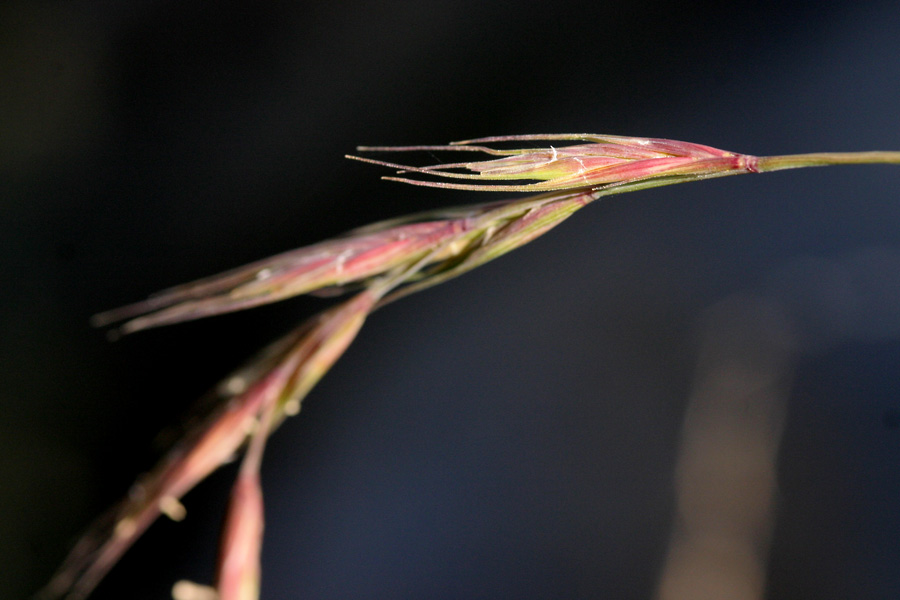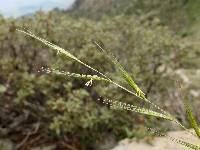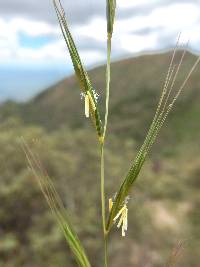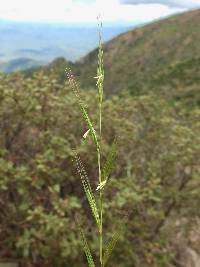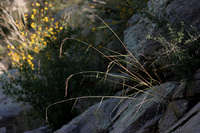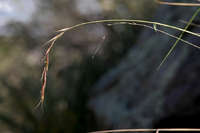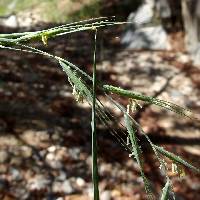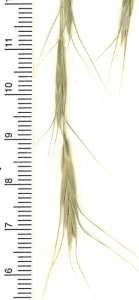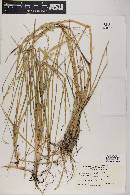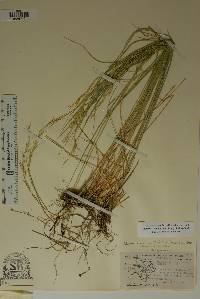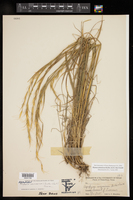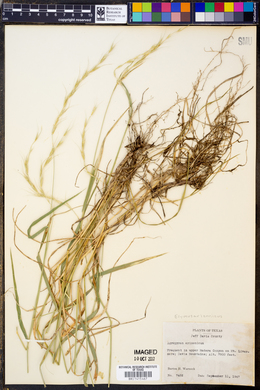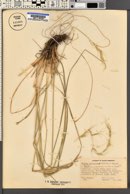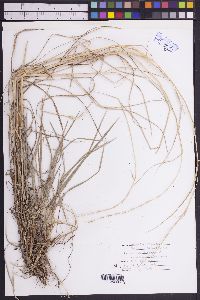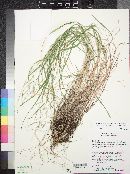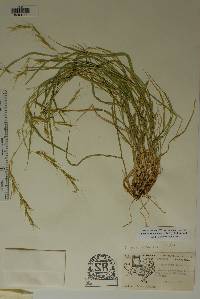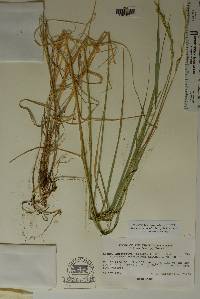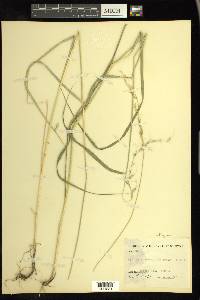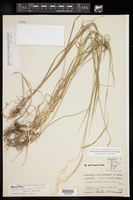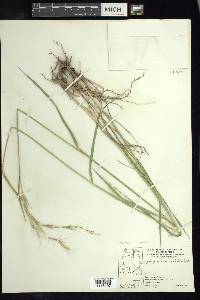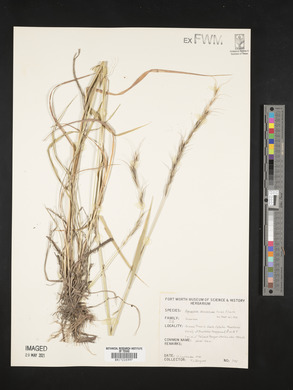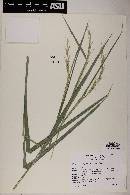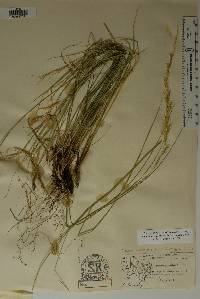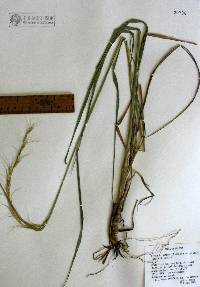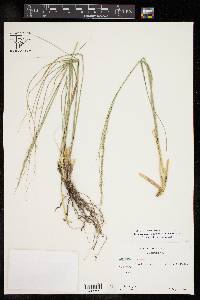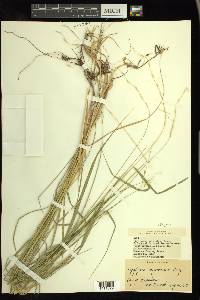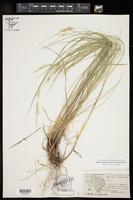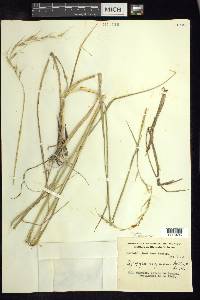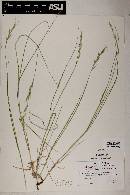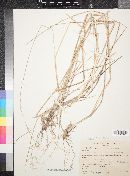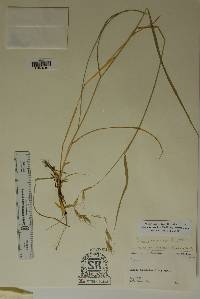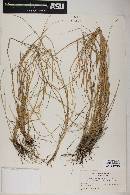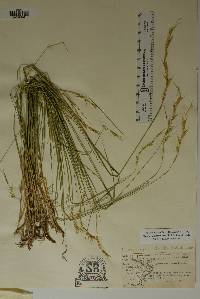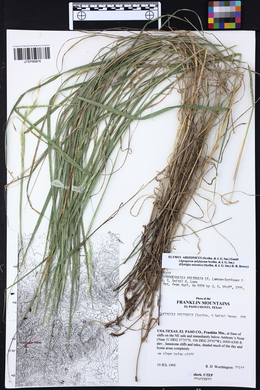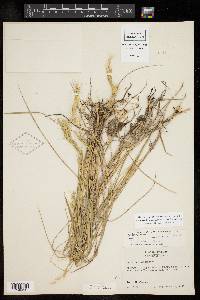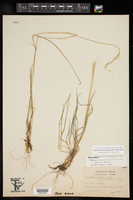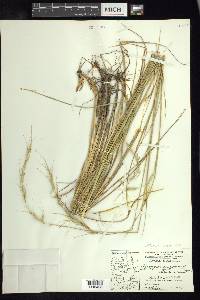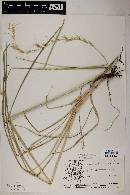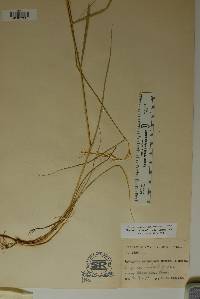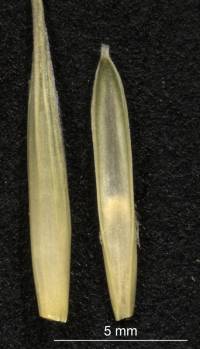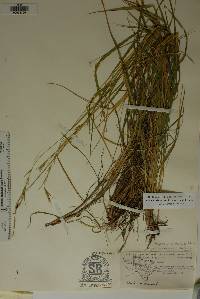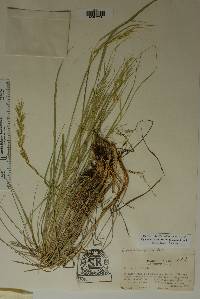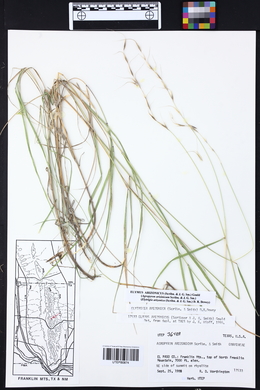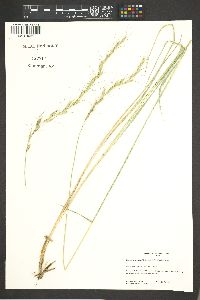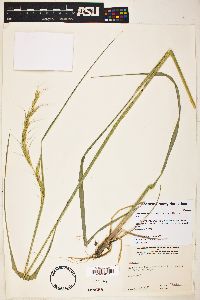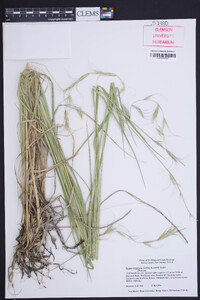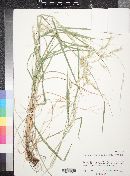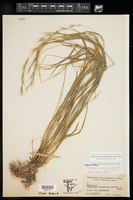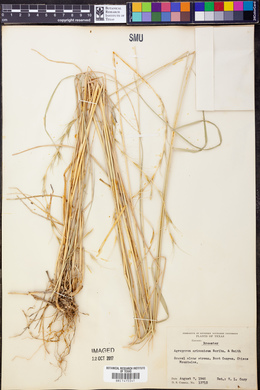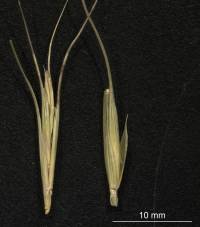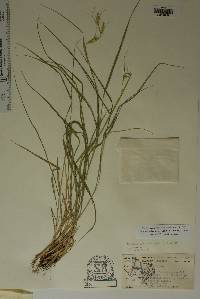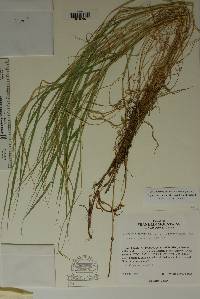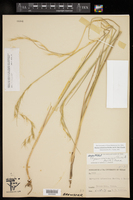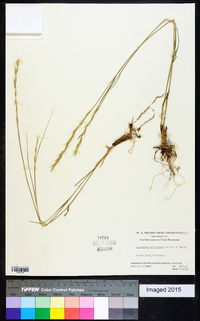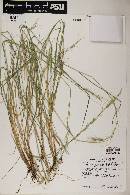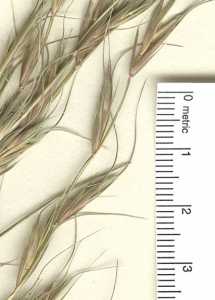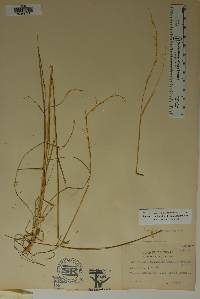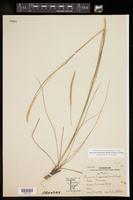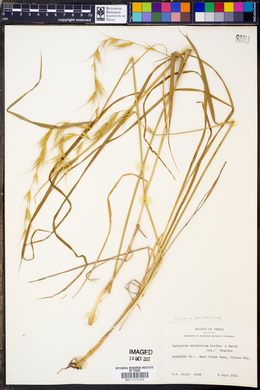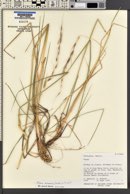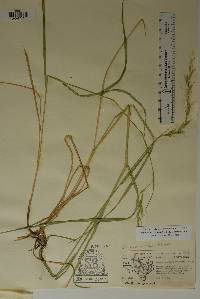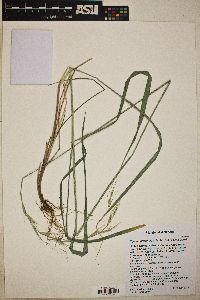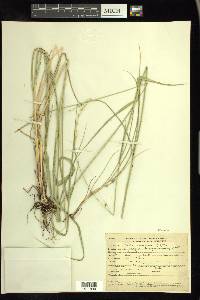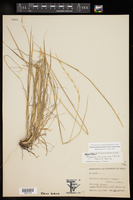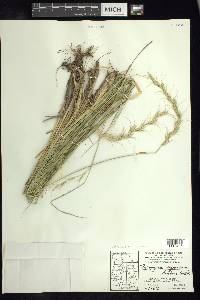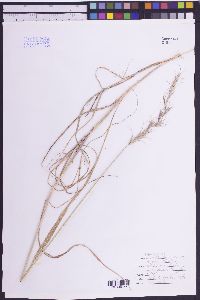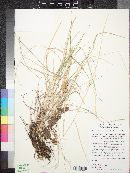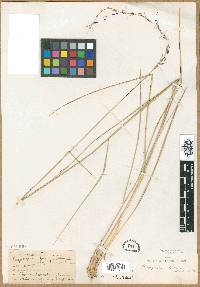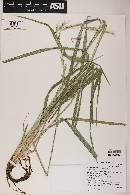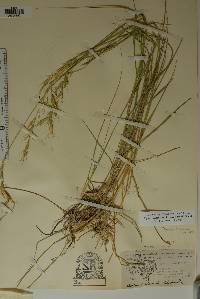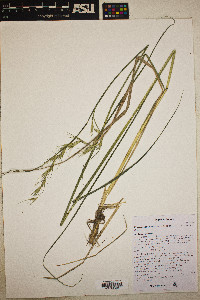
|
|
|
|
Family: Poaceae
Arizona wheatgrass, more...Arizona Wild Rye, Arizona wildrye
[Agropyron arizonicum Scribn. & J.G. Sm., moreAgropyron spicatum var. arizonicum (Scribn. & J.G. Sm.) M.E. Jones, Elytrigia arizonica (Scribn. & J.G. Sm.) D.R. Dewey, Pseudoroegneria arizonica (Scribn. & Merr.) A. Löve] |
Plants cespitose, not rhizomatous. Culms 45-100 cm, erect or decumbent at the base; nodes glabrous or almost so. Leaves evenly distributed over the lower 1/2 of the culms; sheaths glabrous; auricles usually present, to 1 mm; ligules to 1 mm on the basal leaves, 1-3 mm on the flag leaves; blades 2.5-6 mm wide, lax, abaxial surfaces smooth and glabrous, adaxial surfaces scabrous, with scattered 0.5-1 mm hairs, veins close together. Spikes 12-25 cm long, 2.5-6 cm wide including the awns, 10-15 mm wide excluding the awns, flexuous, usually nodding or pendent at maturity, with 1 spikelet per node; internodes 11-17 mm long, 0.4-1 mm wide, glabrous, mostly smooth, scabrous on the edges. Spikelets 14-26 mm long, 6-8 mm wide, appressed to divergent, 1.5-2 times as long as the internodes, with 4-6 florets; rachillas glabrous; disarticulation above the glumes and beneath each floret. Glumes narrowly lanceolate, margins about 0.2 mm wide, 3(5)-veined, the bases flat, evidently veined, margins hyaline, widest at about midlength, acute or acuminate, unawned or awned, awns to 4 mm, straight; lower glumes 5-9 mm, upper glumes 8-10 mm; lemmas 8-15 mm, scabrous, rounded on the back, awns 10-25 mm, arcuately diverging; paleas as long as or longer than the lemmas, tapering, apices truncate, about 0.3 mm wide; anthers 3-5 mm. 2n = 28. Elymus arizonicus grows in moist, rocky soil in mountain canyons of the southwestern United States and northern Mexico . When mature, the drooping spike and solitary spikelets make E. arizonicus easy to identify. Immature specimens, or those mounted so that the spike appears erect, are easily mistaken for Pseudoroegneria spicata , but they have thicker culms and longer ligules, more basal leaves, and wider leaf blades. FNA 2007, Gould 1980 Common Name: Arizona wheatgrass Duration: Perennial Nativity: Native Lifeform: Graminoid General: Tufted perennial with stems 45-100 cm, erect or decumbent at base, nodes glabrous or nearly so, in small clumps, with glabrous sheaths and 1 mm auricles. Vegetative: Blades even distributed over lower half of stems, 2.5-6 mm wide, lax, broad and flat with under surfaces smooth and glabrous, upper surfaces scabrous with scattered 0.5-1 mm hairs, veins close together. Inflorescence: Spikes 12-25 cm long, 2.5-6 cm wide including awns, flexuous, usually nodding or pendant with 1 spikelet per node, internodes 11-17 mm long; spikelets 14-26 mm long, 6-8 mm wide, appressed to divergent, 1.5-2 times as long as the internodes, with 4-6 florets; disarticulation above the glumes and beneath each floret; glumes narrowly lanceolate about equal 5-10 mm, 3-veined, acute to acuminate, evidently veined, unawned or with awns to 4 mm, straight; lemmas 8-15 mm, scabrous with awns 10-25 mm, arcuately diverging. Ecology: Found in moist soils, often in rocky soils of canyons from 5,500-9,000 ft (1676-2743 m); flowers July-October. Notes: Can be mistaken for Pseudoroegneria spicata when immature, but has thicker stems and longer ligules, along with more and wider basal leaf blades. At maturity, it is very distinctive with the drooping spike and solitary spikelets. Ethnobotany: Unknown Etymology: Elymus comes form Greek name elymos for millet, while arizonicus means of or from Arizona. Synonyms: Agropyron arizonicum, A. spicatum var. arizonicum, Elytrigia arizonica, Pseudoroegneria arizonica Editor: SBuckley, 2010 |
|
|
|

